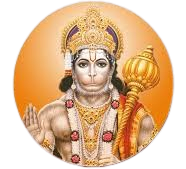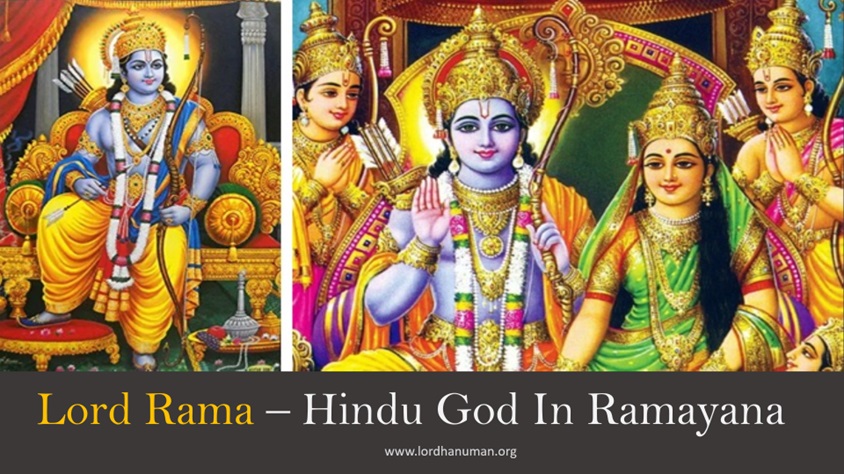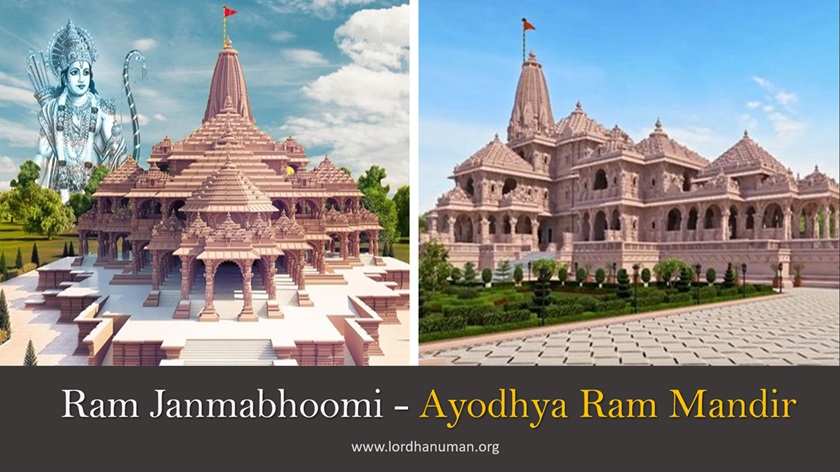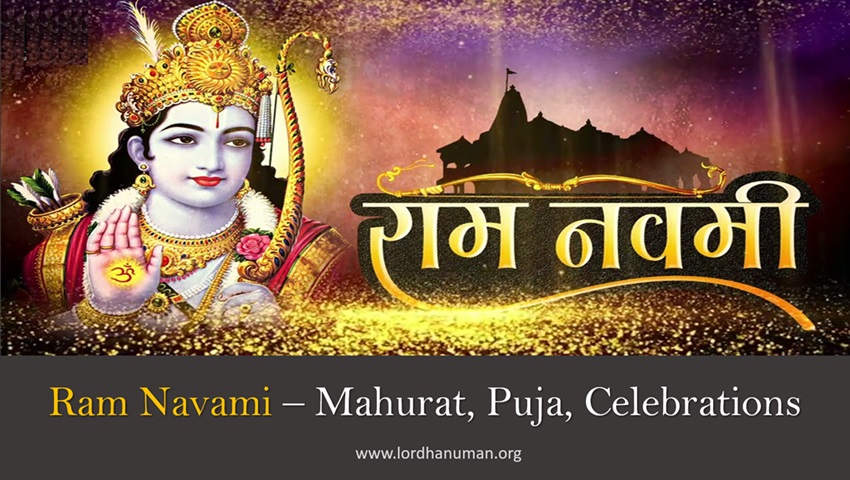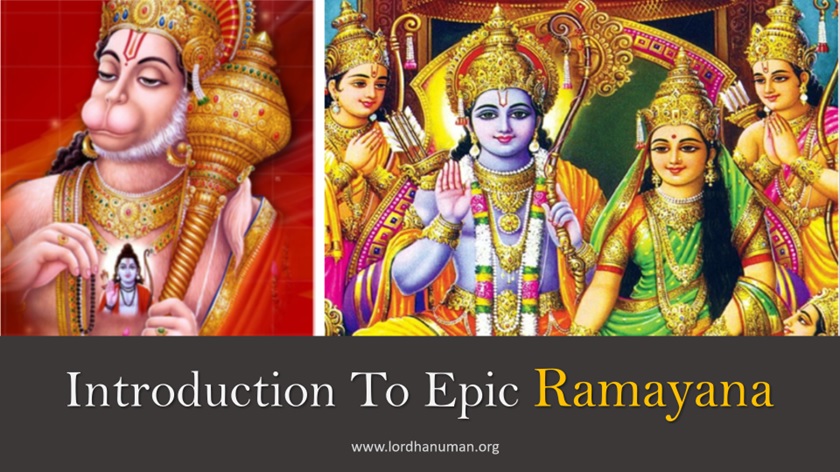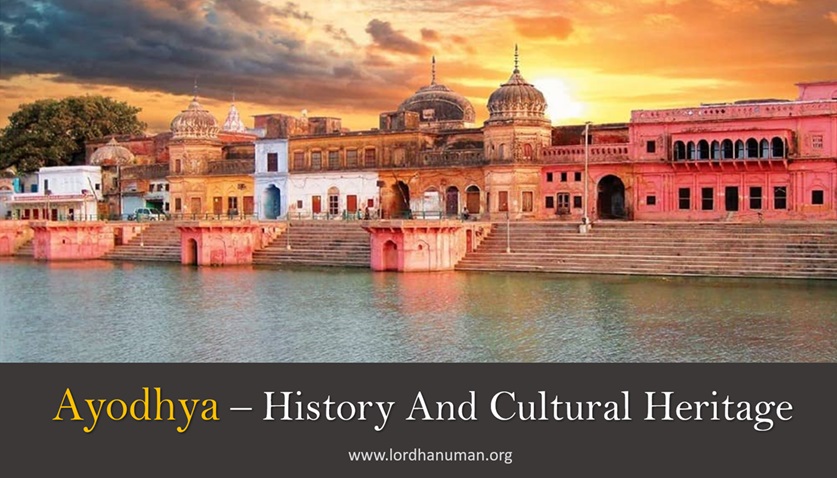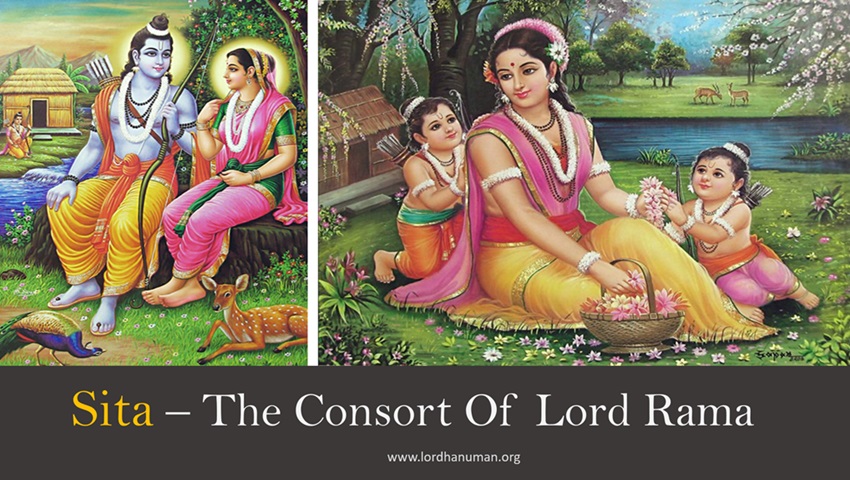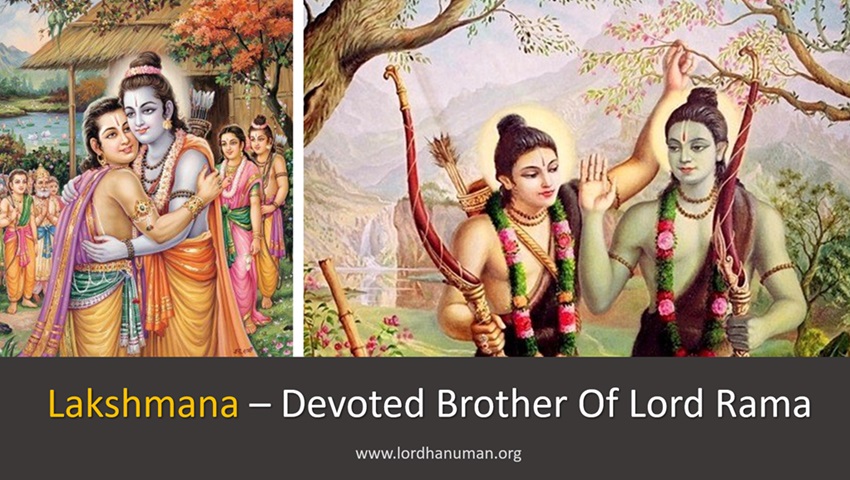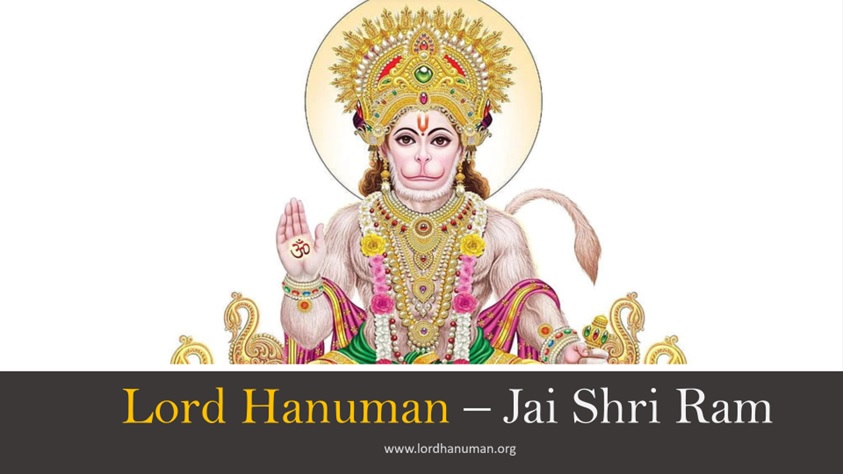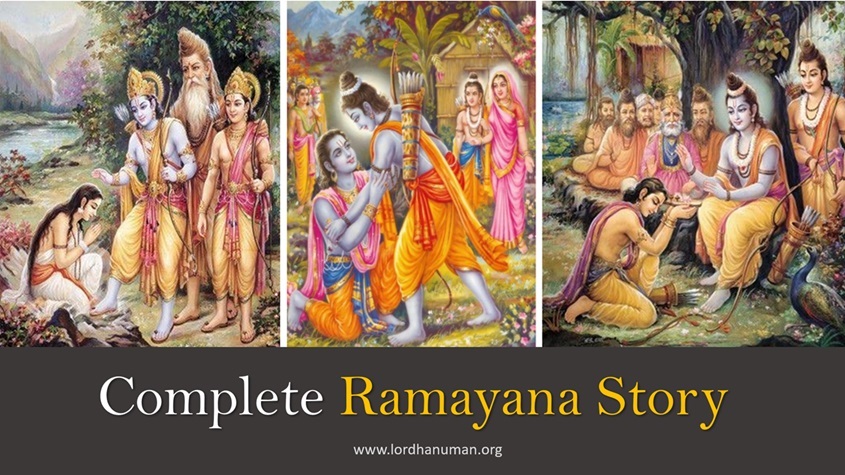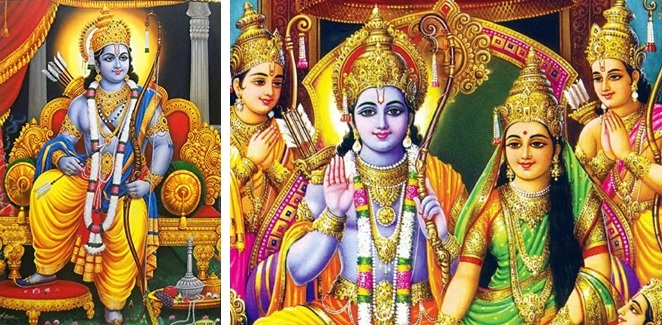
Lord Rama
श्री रामचंद्र
Lord Rama, Shri Ram, Most Revered God In Epic Hindu Scripture, The "Ramayana". Maryada Purushottam Ram.
Lord Rama, or Shri Ram, is one of the most revered Hindu gods and a central figure in the epic Hindu scripture, the “Ramayana.” He is known as Maryada Purushottam Ram due to his exemplary ideal conduct as a son, husband, brother, father, and king.
In Sanskrit, Maryada Purushottam means “honour and righteousness”, and Purushottam means “the supreme man”. Lord Rama had 16 qualities no human being can possess at the same time.
Lord Ram , Hanuman Marching Towards Lanka
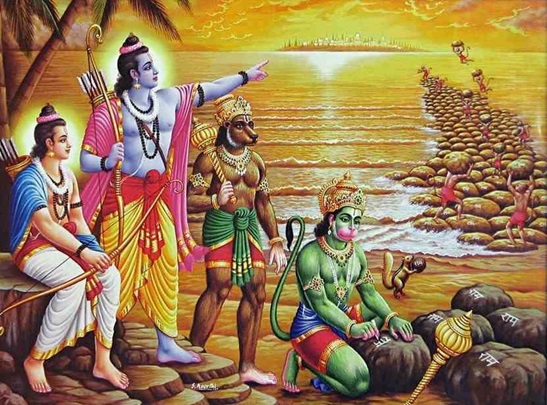
He is considered the seventh incarnation (avatar) of Lord Vishnu. Lord Vishnu, one of the principal deities in Hinduism, incarnated on Earth to uphold righteousness (dharma) and establish moral and ethical values.
The life and teachings of Lord Rama are chronicled in the epic Hindu scripture, the “Ramayana,” which is attributed to the sage Valmiki. The epic narrates in detail complete Ramayana Story in seven kandas (chapters) .
The history of Lord Rama is primarily chronicled in the epic Hindu scripture known as the “Ramayana.” Lord Rama, also referred to as Shri Ram, is considered the seventh avatar (incarnation) of Lord Vishnu, one of the principal deities in Hinduism.
Why Lord Rama Is Worshipped ?
As narrated by Shri Sadhguru, Lord Rama is worshipped and revered in Hinduism for his exemplary qualities, righteous conduct, and embodiment of dharma (righteousness). The narrative of Lord Rama is primarily documented in the ancient Indian epic, the Ramayana, composed by the sage Valmiki.
Rama, the seventh avatar of Lord Vishnu, is celebrated for his unwavering commitment to moral principles, duty, and virtuous living. His life serves as a guiding light, illustrating the ideals of a noble ruler, devoted husband, and compassionate leader.
The worship of Lord Rama is deeply ingrained in the cultural and religious fabric of India. Devotees admire his selfless sacrifice, as he willingly accepted a 14-year exile to honor his father’s word. Rama’s commitment to justice is showcased in his war against the demon king Ravana, symbolizing the triumph of good over evil.
Rama’s teachings, encapsulated in the principles of dharma, compassion, and humility, continue to inspire millions. His divine qualities, known as “Maryada Purushottam,” meaning the perfect man, make him a revered deity, and his worship fosters devotion, moral integrity, and spiritual growth among devotees. Lord Rama’s influence extends beyond religious boundaries, promoting universal values that resonate with individuals seeking a path of righteousness and virtue.
Final Battle Between Lord Rama And Ravana
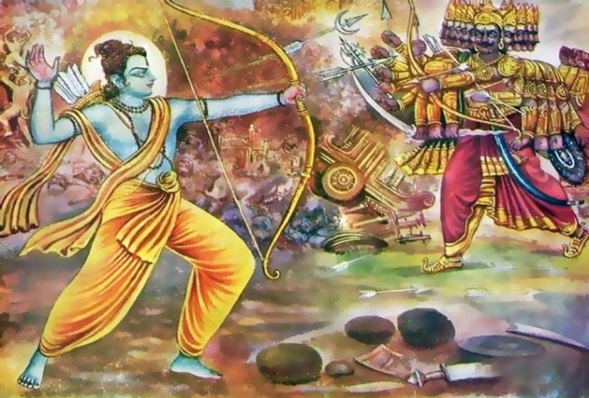
The Ramayana story is a significant part of Hindu mythology and has been passed down through generations as a tale of virtue, righteousness, and devotion. Here is a brief summary of the history of Lord Rama:
Ramayana
Lord Rama And Ramayana
The Ramayana is an ancient Sanskrit epic composed by Maharshi Valmiki. He was the composer of the first Sanskrit poem (the Adikavya), known the world over as the epic Ramayana.
The story of Lord Rama serves as a timeless and cherished narrative in Hinduism (Sanatana Dharma), emphasizing the principles of righteousness, devotion, and the victory of good over evil. Rama is not only a deity but also a symbol of an ideal human being and an exemplary ruler in Hindu philosophy and culture.
Sita Swayamvar
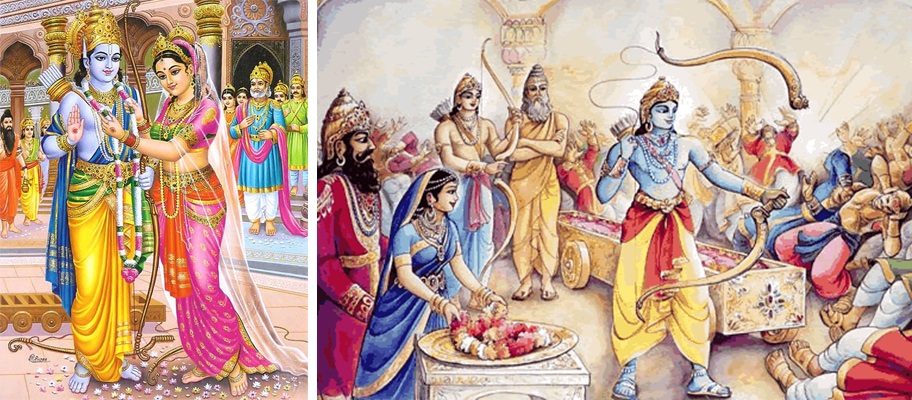
The Ramayana is not only a religious and mythological text but also a cultural and moral guide. It emphasises the values of Sanatana dharma (righteousness), devotion, truth, and the victory of good over evil. Lord Rama’s life and actions are held up as an example of the ideal person and ruler.
The Ramayana has been retold and adapted in various languages and forms across South and Southeast Asia. It continues to be an essential part of Hindu religious and cultural traditions, and its themes of love, heroism, and virtue resonate with people of all backgrounds.
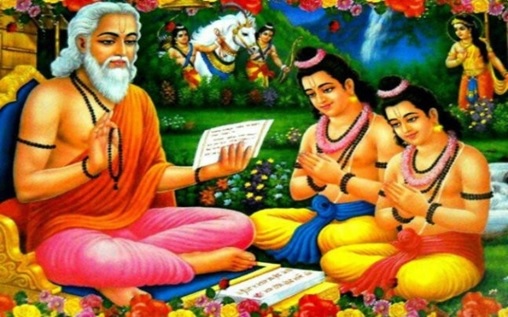
The Ramayana is a saga (Virgatha) of Lord Rama, his wife Sita, and his younger brother Laxman. This epic describes in detail Rama’s struggle to rescue his beloved wife Sita from the clutches of demon king Ravana with the help of Lord Hanuman and Vanar Sena.
The Epic Ramayana is traditionally attributed to the authorship of the sage Valmiki and dated to around 500 BCE to 100 BCE.
आदर्श राजा
Maryada Purushottam Ram
What Makes Lord Rama As Ideal King ?
Lord Rama is often referred to as “Maryada Purushottam,” a title that carries profound significance and reflects the character and virtues attributed to him in Hindu tradition. The term “Maryada” translates to “code of conduct” or “ethical and moral principles,” and “Purushottam” means “the supreme person” or “the best among men.” Therefore, Maryada Purushottam can be understood as “the supreme man of ethical and moral conduct.”
The title “Maryadapurushottam” encapsulates the idea that Lord Rama represents the highest standard of ethical conduct and moral values. Devotees hold Rama as a role model and seek inspiration from his life to cultivate virtues, lead a righteous existence, and fulfill their duties in accordance with dharma.
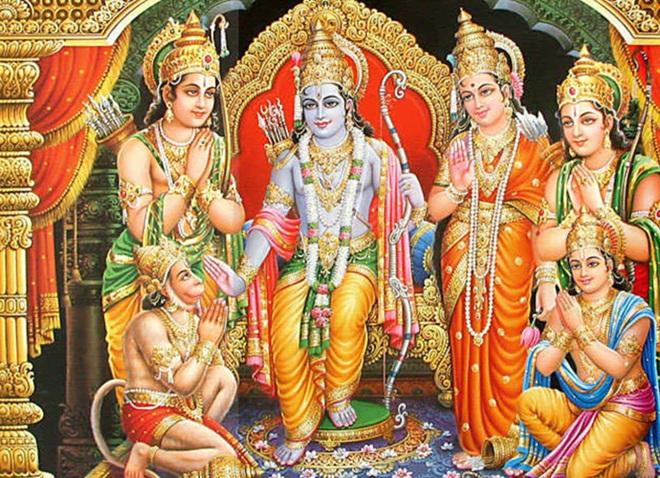
The Ramayana, an epic attributed to the sage Valmiki, narrates the life of Lord Rama and his adherence to Maryada, leaving an indelible mark on Hindu philosophy and cultural ethos.
Here are some reasons why Lord Rama is bestowed with this title:
Ideal King Lord Rama
- Exemplary Virtues and Morality:
Lord Rama is considered the embodiment of righteousness (dharma) and virtue. His life is depicted as an exemplar of moral conduct, ethical principles, and adherence to duty.
- Adherence to Dharma:
Rama is celebrated for his unwavering commitment to dharma (righteousness). He adheres to his duty as a prince, son, husband, and ruler with utmost sincerity and dedication.
- Observance of Maryada:
Rama is said to have followed the principles of Maryada, which refers to the proper conduct and behavior expected from individuals in different roles and relationships. This includes his roles as a son, husband, brother, and king.
- Ideal Son (Maryada Purushottam Rama):
As a son, Rama is often highlighted for his deep respect and devotion to his parents, particularly his father, King Dasharatha. His willingness to honor his father’s words and accept exile to the forest is a testament to his commitment to parental authority.
- Ideal Husband (Pati Vrata):
Rama’s unwavering devotion to his wife, Sita, is exemplary. Despite facing challenges and doubts regarding Sita’s purity, Rama stands by her and undertakes significant sacrifices for her well-being.
- Ideal Brother:
Rama’s relationship with his brothers, especially Lakshmana and Bharata, showcases fraternal love and loyalty. His interactions with his siblings reflect qualities of mutual respect, support, and sacrifice.
- Ideal King (Rajadhiraja):
Rama’s rule as the king of Ayodhya is characterized by justice, fairness, and concern for the well-being of his subjects. His reign is often depicted as the golden era of dharma and prosperity.
- Balancing Personal and Public Responsibilities:
Lord Rama successfully balances his personal duties and responsibilities with his broader role as a ruler. His ability to maintain equilibrium in various roles without compromising on moral principles is emphasized.
- Teaching through Example:
Lord Rama’s life serves as a moral guide for devotees. The challenges he faces and the choices he makes provide valuable lessons in navigating the complexities of life while adhering to ethical values.
Sita Swayamvar
Marriage Of Lard Rama With Sita
The marriage of Lord Rama, a central figure in Hindu mythology and the seventh avatar of Lord Vishnu, is a significant event in the epic Ramayana. Lord Rama’s marriage to Sita is a symbol of virtue, dharma (righteousness), and divine union. The Ramayana narrates a detailed account of the marriage of Lord Rama with Devi Sita.
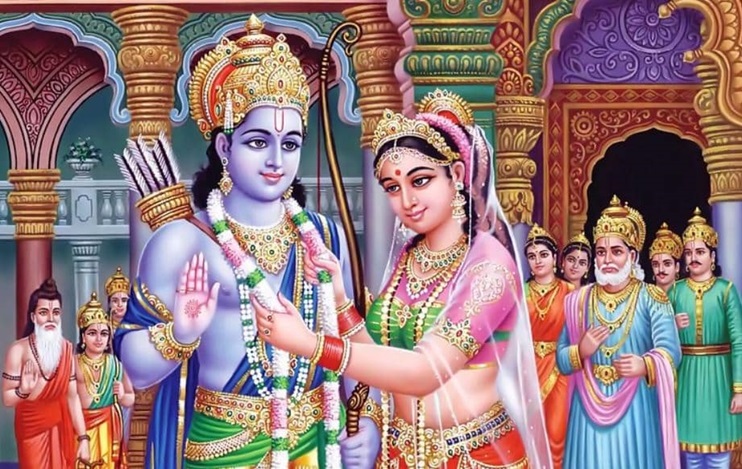
According to the Ramayana, Lord Shiva had gifted a celestial bow to King Janaka of Mithila. King Janaka set the condition that he would marry his daughter Sita to the person who would be able to string Pinaka, the celestial bow of Lord Shiva.
The Ramayana, attributed to the sage Valmiki, narrates the life of Lord Rama, his wife Sita, and the trials they face. Rama, the prince of Ayodhya, is an embodiment of dharma and virtue. His marriage to Sita is a pivotal episode that sets the stage for the larger narrative.
Sita Marriage Ceremony
Ramayana narrates detailed description of Swayamvara meaning marriage of Sita. Goddess Sita, the daughter of King Janaka of Mithila (also known as Videha), is born from the Earth, and her beauty and virtues are renowned far and wide. King Janaka hosts a grand swayamvara (a ceremony where a princess chooses her husband from a gathering of eligible princes) for Sita.
The condition for winning Sita’s hand is to string the divine bow of Lord Shiva, known as the Shiva Dhanush. Lord Rama first prayed to Lord Shiva before attempting to string the holy bow of Lord Shiva. Rama, by virtue of his divine powers and blessings could comfortably string the Shiv Dhanush.
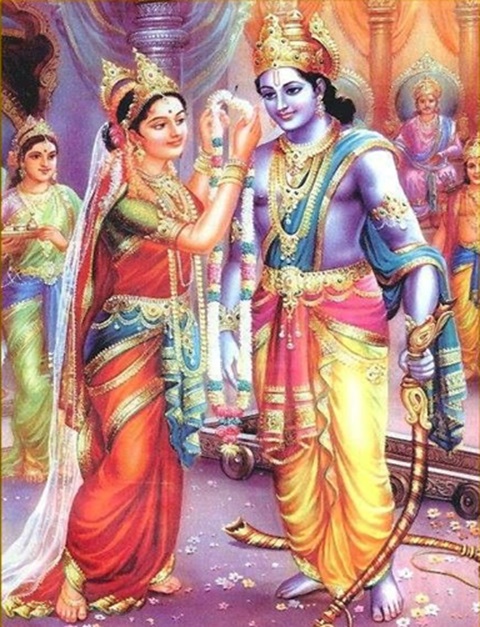
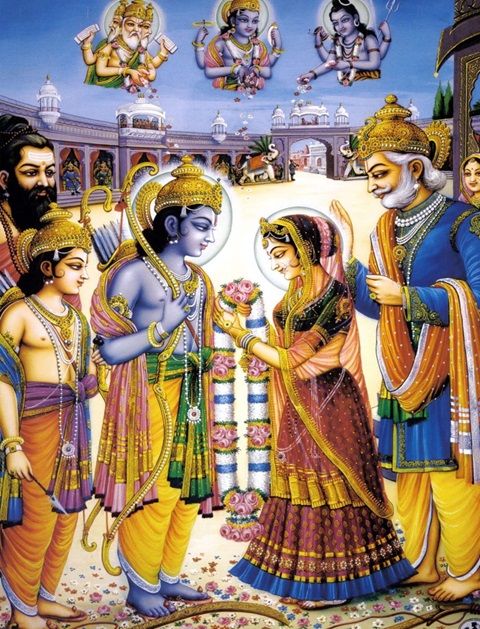
Lord Rama's Participation In Sita's Marriage Ceremony
News of the swayamvara reaches Ayodhya, and King Dasharatha decides to send his sons to participate. Rama, the eldest son, along with his brothers Lakshmana, Bharata, and Shatrughna, goes to Mithila. Rama not only strings the Shiva Dhanush effortlessly but also breaks it in the process. This extraordinary feat proves his divine nature.
After Rama’s victory, Sita garlands him, choosing him as her husband. The joyous occasion is filled with celebrations, and it is agreed that Rama and Sita are to be married. The marriage ceremony takes place with elaborate rituals, and the union of Rama and Sita is celebrated with immense joy.
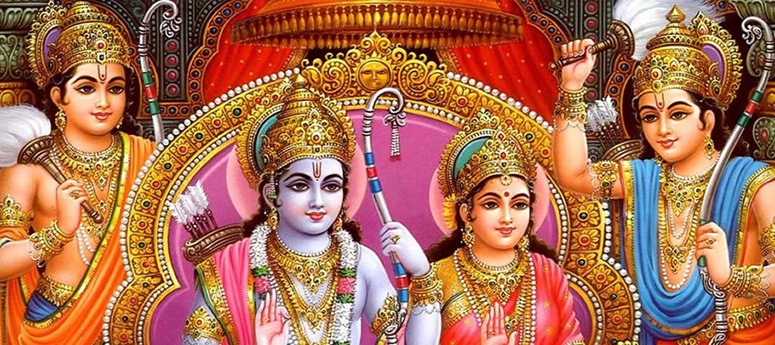
The marriage of Rama and Sita is revered in Hindu culture and is considered a divine union symbolizing love, commitment, and the triumph of dharma. The episode holds deep spiritual significance, with Rama representing the ideal husband (Pati Dharma) and Sita as the epitome of virtue and devotion (Pati Vrata).
Kaikeyi's Boon
Kaikeyi is a prominent character in the Hindu epic Ramayana. She was one of the wives of King Dasharatha of Ayodhya and the mother of Bharata. Kaikeyi’s actions play a crucial role in the unfolding of events that lead to Lord Rama’s exile and form a significant part of the Ramayana story.
King Dasaratha went to inform Kaikeyi of Rama’s coronation, She was in grief and anger. When he enquired, Kaikeyi asked for two boons which he had promised earlier: first boon, she insisted that Bharata should be crowned as king and second boon, Rama should be sent on exile for fourteen years.
As the marriage celebrations are underway, the boons granted to Queen Kaikeyi by King Dasharatha come into play. Kaikeyi, manipulated by the maid Manthara, demands the fulfillment of two boons granted to her earlier. These boons lead to Rama’s exile to the forest for fourteen years.
Rama's Exile And Separation
Despite the joyous occasion of the marriage, Rama willingly accepts the exile to fulfill his father’s promise. Sita, devoted to Rama, chooses to accompany him to the forest, as does Lakshmana.
The separation of the divine couple from the comforts of the royal palace marks a turning point in the Ramayana, leading to a series of events that form the essence of the epic.
Rama , Sita And Lakshmana Leaving For Exile
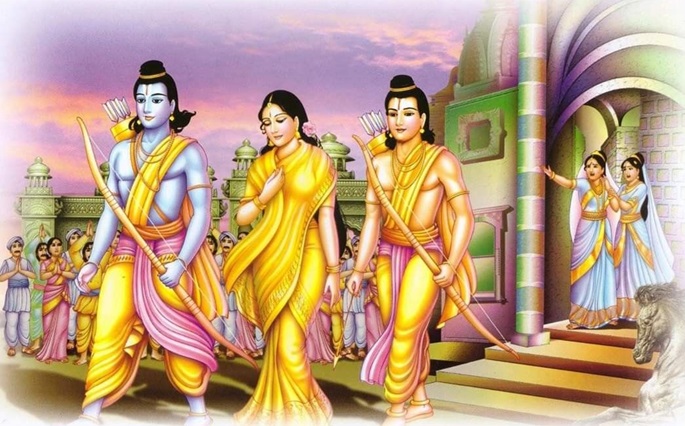
The marriage of Lord Rama to Sita is not only a pivotal event in the Ramayana but also a source of inspiration for countless devotees. It exemplifies the values of righteousness, sacrifice, and unwavering devotion. The subsequent trials faced by Rama and Sita, including Sita’s abduction by Ravana and Rama’s quest to rescue her, further unfold the epic narrative.
Lord Rama's Life In Exile
The life of Lord Rama during his exile is a central part of the Hindu epic, the Ramayana. According to the epic, Rama, the seventh avatar of Lord Vishnu, spent fourteen years in exile, along with his wife Sita and his loyal brother Lakshmana. The exile, although a period of hardship, was marked by numerous significant events and challenges that tested Rama’s character and principles.
The exile of Lord Rama is not only a significant episode in the Ramayana but also a profound exploration of duty, sacrifice, and the triumph of virtue over adversity. The narrative continues to be a source of inspiration and moral guidance in Hindu philosophy and core values of Sanatana dharma.
1. Banishment from Ayodhya
The events leading to Rama’s exile began when Queen Kaikeyi, influenced by her maid Manthara, requested King Dasharatha to fulfill the boons she had earned earlier. As a result, Rama was compelled to leave Ayodhya for fourteen years. Despite the pleas of his father and the citizens, Rama willingly accepted the exile to fulfill his father’s promise.
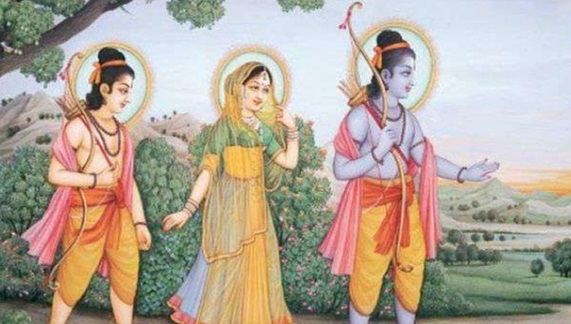
2. Sita And Lakshmana's Devotion
Rama’s wife, Sita, and his devoted brother, Lakshmana, chose to accompany him during the exile. Their unwavering devotion and commitment to Rama became exemplary. Sita’s decision to share in her husband’s hardships is particularly emphasized in the epic.
3. Encounter with Shurpanakha
During their stay in the Dandaka Forest, Rama, Sita, and Lakshmana encountered Shurpanakha, a demoness and sister of Ravana. Shurpanakha was attracted to Rama and Lakshmana but was ultimately disfigured by Lakshmana when she approached Sita aggressively. This incident set the stage for the subsequent events involving Ravana.
Shurpanakha was disfigured by Lakshmana
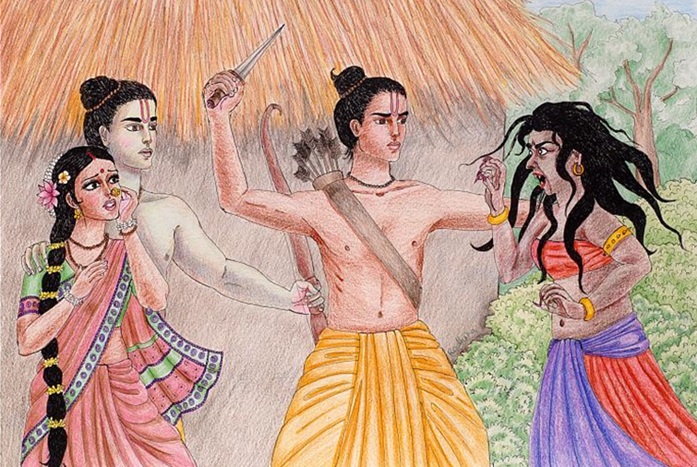
4. Golden Deer And Sita's Abduction
Disguised as a Golden Deer, Ravana Abducts Sita
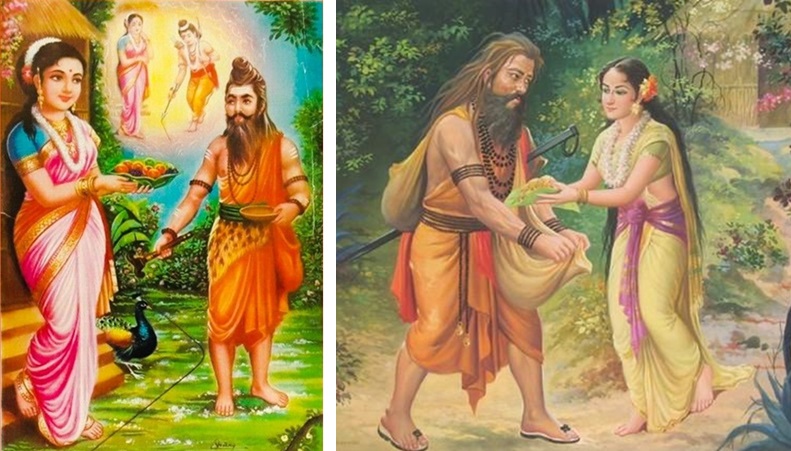
5. Hanuman's Search for Sita
Rama’s unwavering devotion to Sita and his determination to rescue her led to the formation of an alliance with Sugriva, the monkey king. Hanuman, a prominent figure in the Ramayana, played a crucial role in the search for Sita. Hanuman discovered Sita’s whereabouts in Lanka, the kingdom of Ravana, and conveyed this information to Rama.
Ram Entrust Hanuman To Search Sita
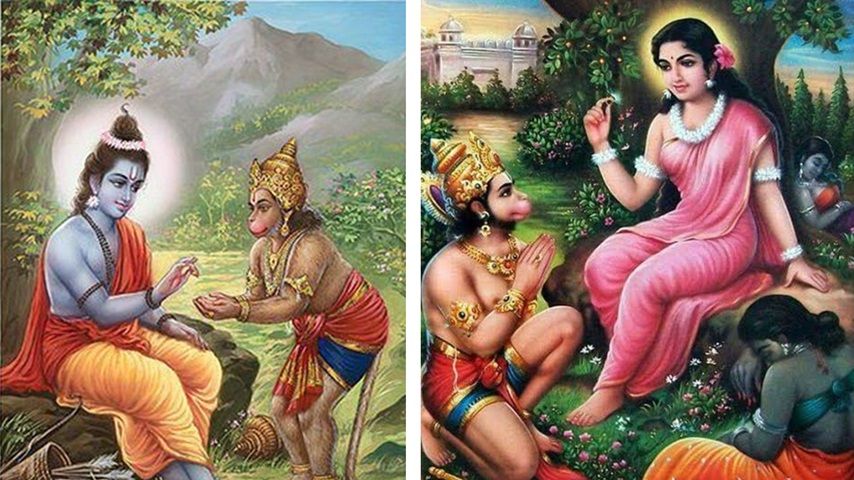
6. Building of Setu (Bridge) To Lanka
In preparation for the battle with Ravana, Rama, along with the help of Hanuman and the monkey army, constructed a bridge (Ram Setu) across the ocean to reach Lanka. The construction of the bridge is a celebrated event in the epic and symbolizes unity, determination, and the triumph of good over evil.
Hanuman And Vanar Sena Builds Bridge To Lanka
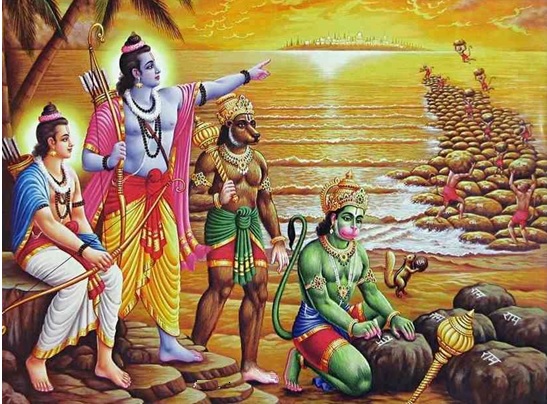
7. Rama's Battle With Ravana
The epic battle between Lord Rama and Ravana is a pivotal and dramatic episode in the Hindu epic, the Ramayana. This confrontation is the climax of Rama’s fourteen-year exile, marked by Sita’s abduction and Ravana’s tyranny. The battle is a testament to Rama’s unwavering commitment to dharma (righteousness) and the triumph of good over evil.
Upon learning of Sita’s abduction by Ravana, Rama marshals an army, forming an alliance with Sugriva, the vanara (monkey) king and Hanuman. The quest to rescue Sita takes them to Lanka, the opulent kingdom of Ravana. The strategic and heroic battle unfolds on the battlefield, showcasing divine weapons, supernatural powers, and acts of valor.
Rama, armed with the celestial bow known as the Pinaka, faces Ravana, a formidable demon king with ten heads and great prowess. The battle is fierce, with each combatant unleashing powerful weapons and demonstrating extraordinary skills. Ravana’s tenacity and magical abilities test Rama’s resolve, while Rama’s divine arrows pierce through Ravana’s defenses.
Rama Fights A Fierce Battle With Ravana
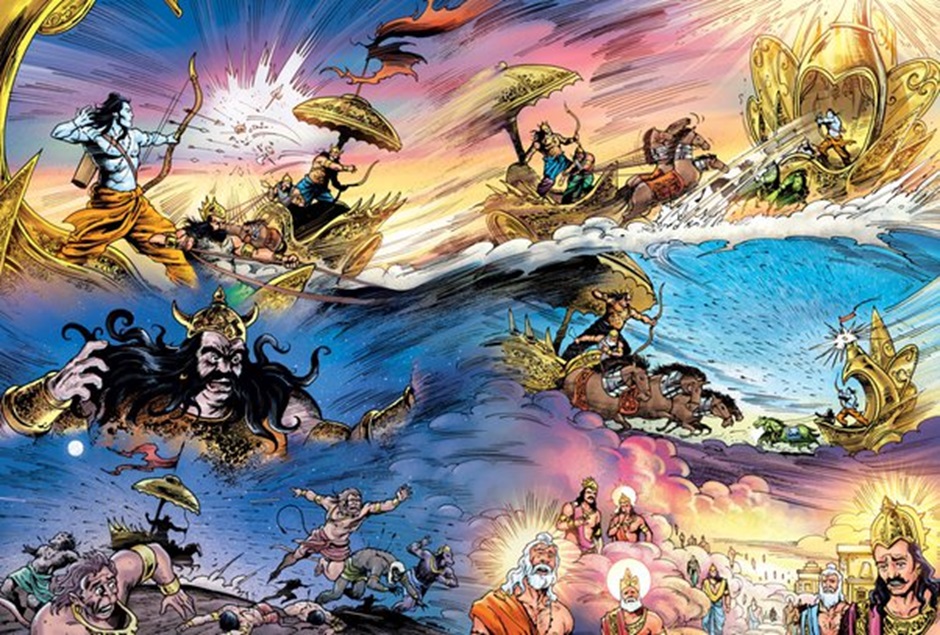
The turning point comes when Rama, guided by Lord Shiva’s blessings, aims a powerful arrow at Ravana’s heart, vanquishing the mighty demon king. Ravana, despite his arrogance and cruelty, meets his end, emphasizing the consequences of straying from dharma.
The victorious Rama, having fulfilled his duty and rescued Sita, returns to Ayodhya with his consort and loyal followers. The battle symbolizes the eternal struggle between righteousness and evil, showcasing Rama’s adherence to duty and the ultimate triumph of virtue.
Rama Kills Ravana In The Final Battle
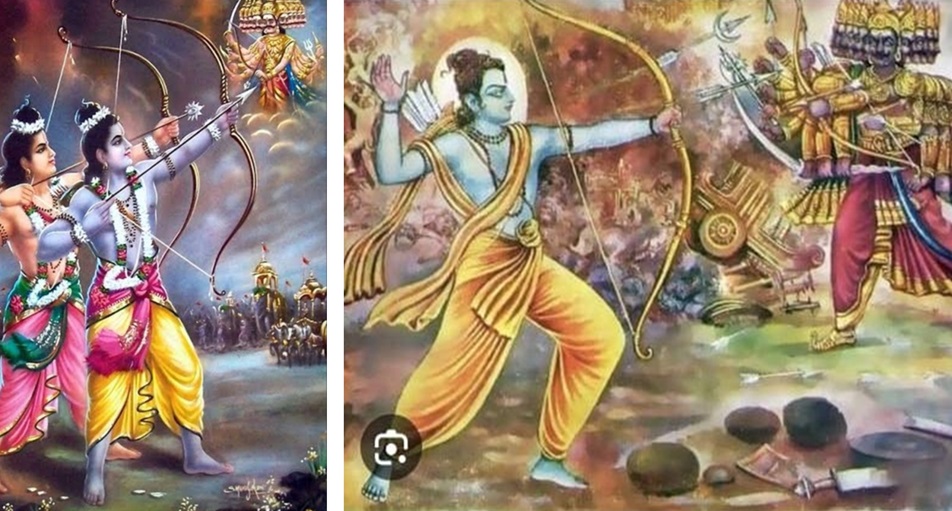
The significance of Rama’s battle with Ravana extends beyond a physical confrontation. It embodies the timeless ideals of justice, honor, and the inevitability of divine intervention when righteousness is threatened. The narrative inspires moral reflection and underscores the enduring message that, in the cosmic play of dharma, good will always prevail over darkness.
8. Rama Return to Ayodhya
After the victory over Ravana, Rama, Sita, and Lakshmana returned to Ayodhya. Rama’s exile ended, and he was crowned as the rightful king. The citizens of Ayodhya celebrated Diwali to celebrate his return with joy, and Rama’s reign exemplified the principles of dharma and righteous rule.
The exile of Lord Rama is not only a significant episode in the Ramayana but also a profound exploration of duty, sacrifice, and the triumph of virtue over adversity. The narrative continues to be a source of inspiration and moral guidance in Hindu philosophy and as core values of Sanatana dharma core values .
Rama Returns to Ayodhya
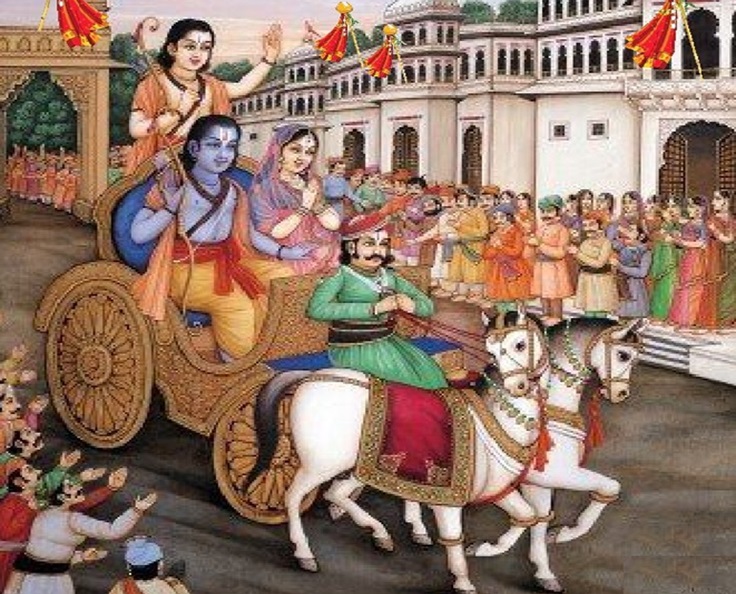
Rama's Coronation
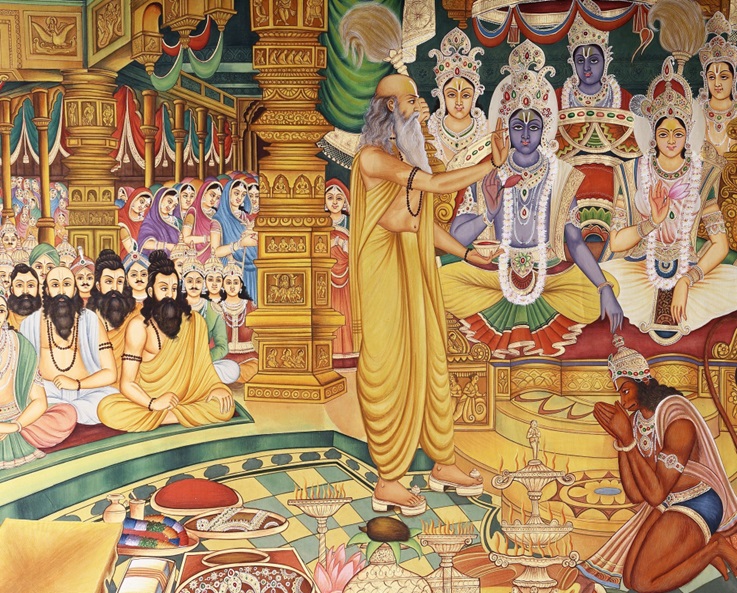
Rama's Coronation
The coronation of Lord Rama is a pivotal and joyous event in the Ramayana, one that marks the culmination of his exile, the victory over the demon king Ravana, and the establishment of dharma (righteousness).
The coronation of Lord Rama is celebrated as a moment of great joy and righteousness in Hindu culture. It symbolizes the victory of virtue, the establishment of dharma, and the return of divine order to the kingdom of Ayodhya.
The grand coronation ceremony takes place in Ayodhya with all the traditional rituals and festivities. The entire city is in jubilation as Rama is anointed as the king of Ayodhya.
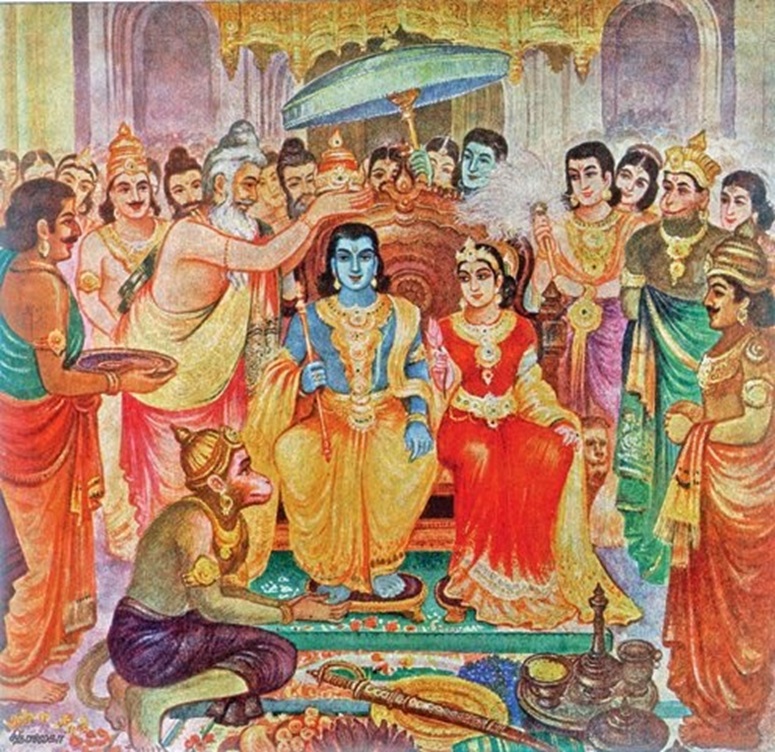
The coronation ceremony involves a series of rituals conducted according to the traditions of the time. These rituals include the anointment of Rama with consecrated water and other auspicious substances, symbolizing his divine kingship.
Devotees commemorate this event through festivals, rituals, and the retelling of the Ramayana story, finding inspiration in Rama’s exemplary life and leadership.
भगवान राम के 16 दिव्य गुण
16 Divine Qualities of Lord Rama
Lord Rama, the central figure in the Hindu epic Ramayana and Ramcharitmanas, is revered for embodying virtuous qualities and righteousness. The sixteen qualities of Lord Rama, known as “Shodasha Kala Sampurna,” are often extolled in various scriptures and traditions.
Here are these sixteen divine qualities:
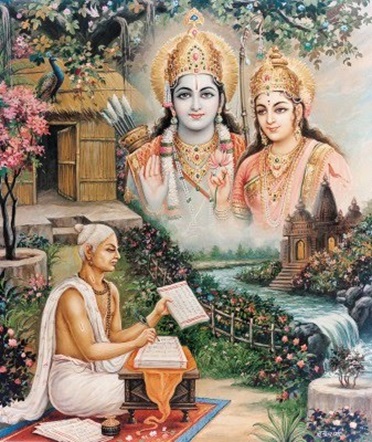
16 Divine Qualities of Lord Rama
- Gunavaan : Principled and Endowed with excellent qualities.
- Veeryavan : Endowed with Prowess.
- Dharmajnah: Always righteous in all actions.
- Krithajnah : Grateful (Remembers even a little help done by others).
- Satyavaakyah : Truthful in his statements.
- Dhrida Vratah : Self-determined and firm in his vows and deeds.
- Chaarithrena : Endowed with Good conduct.
- Sarvah Bhuteshu Hitah : Benefactor of all living beings.
- Vidvaan : Knower of everything.
- Samarthah : Competent in doing things that cannot be done by others.
- Eka Priya Darshanah : Solely delightful in appearance.
- Aatmavan : Courageous
- Jita Krodhah– Conquerer of Anger
- Dhyutimaan : Endowed with splendor and brilliance.
- An- Asuyakah : One who is free from envy.
- Jaata Roshasya asya samuge devaah ca bibhyati : Even Gods are afraid when provoked to war.
These sixteen qualities of Lord Rama serve as an ideal for devotees and are often cited as virtues to emulate in one’s own life. The character of Rama continues to inspire millions with its embodiment of righteousness, compassion, and divine attributes.
Ayodhya Ram Temple
The Ayodhya Ram Temple, officially known as Sri Ram Janmabhoomi Mandir, is a Hindu temple located in Ayodhya, Uttar Pradesh, India. It stands at the site believed to be the birthplace of Lord Rama, a revered deity in Hinduism.
The temple’s construction gained significance after a long-standing legal and social dispute regarding the land, culminating in a Supreme Court verdict in 2019 that allowed for the construction of the Ram Temple.
The temple complex is designed in the Nagara style of temple architecture, featuring intricate carvings and sculptures. The main deity of the temple is Lord Rama, with his consort Sita, his loyal companion Hanuman, and other divine figures also honored.
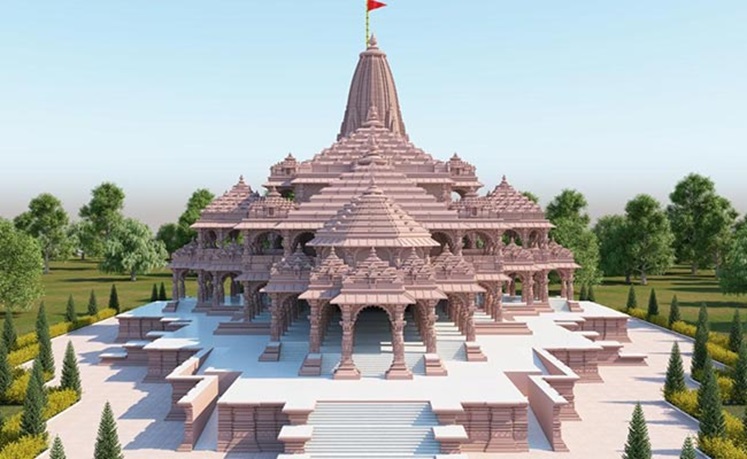
The groundbreaking ceremony for the temple took place on August 5, 2020, and the temple is expected to become a prominent pilgrimage site. Indian prime minister Shri Narendra Modi fulfilled his promise to build grand Ram temple at Rama’s birthplace in the holy city of Ayodhya.
The construction of the Ayodhya Ram Temple holds cultural, religious, and national significance, symbolizing a historic moment of resolution and unity in India. The temple aims to foster a sense of shared heritage and spirituality among Hindus.
Read More
Ram Navami
Ram Navami is a significant Hindu festival celebrating the birth of Lord Rama, the seventh incarnation of Vishnu, observed on the ninth day of Chaitra month (March-April). It marks the culmination of a nine-day period of fasting and devotion known as Chaitra Navaratri.
Lord Rama, the protagonist of the ancient Indian epic Ramayana, embodies virtues like righteousness, moral integrity, and bravery. His life and deeds set an exemplary model of virtuous conduct and dharma, guiding millions in their ethical and moral life choices.
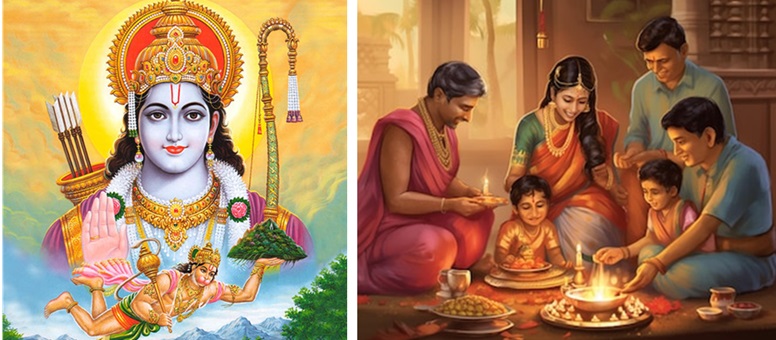
The festival is celebrated with immense fervor across India and in places with Hindu communities worldwide. Devotees engage in readings of the Ramayana, perform elaborate pujas, and participate in temple ceremonies. Some regions host vibrant processions, dramatic enactments of scenes from Rama’s life, and bhajan sessions that praise his deeds and teachings.
The essence of Ram Navami goes beyond mere festivity; it is a day for reflection on one’s inner self and adherence to the path of virtue laid out by Rama. It’s a time for renewing one’s commitment to Dharma and cleansing one’s soul of sin. Thus, Ram Navami is both a celebration of a divine birth and a spiritual rejuvenation for devotees.
Read More
